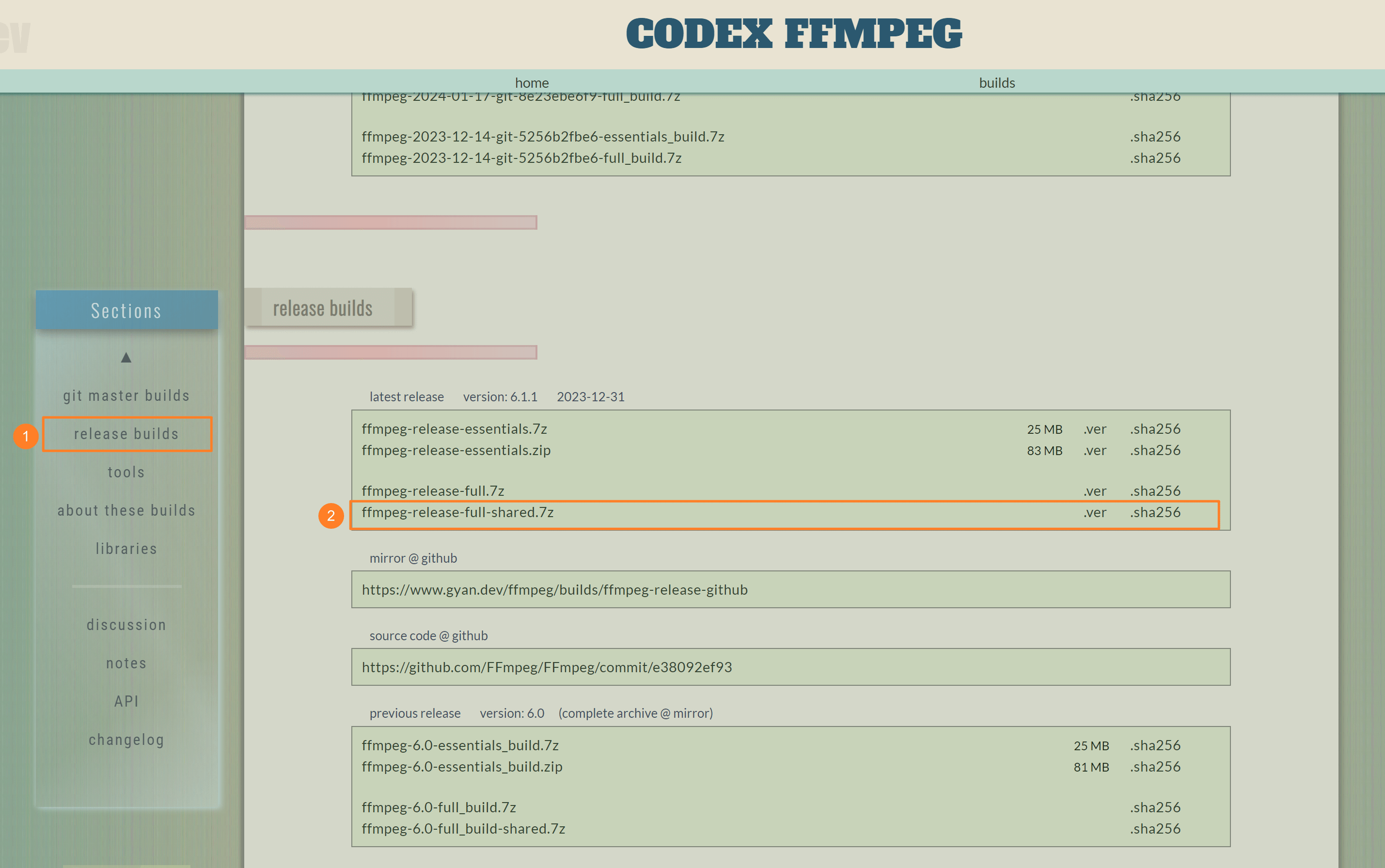参考文档
STM32串口——5个串口的使用方法_51CTO博客_stm32串口通信的接收与发送
串口是我们常用的一个数据传输接口,STM32F103系列单片机共有5个串口,其中1-3是通用同步/异步串行接口USART(Universal Synchronous/Asynchronous Receiver/Transmitter),4,、5是通用异步串行接口UART(Universal Asynchronous Receiver/Transmitter)。
配置串口包括三部分内容:
1. I/O口配置:TXD配置为复用推挽输出(GPIO_Mode_AF_PP),RXD配置为浮空输入(GPIO_Mode_IN_FLOATING);
2. 串口配置:波特率等;
3. 中断向量配置:一般用中断方式接收数据。
注意事项:
1. USART1是挂在APB2,使能时钟命令为:
RCC_APB2PeriphClockCmd(RCC_APB2Periph_USART1, ENABLE );
其他几个则挂在APB1上,如2口:
RCC_APB1PeriphClockCmd(RCC_APB1Periph_USART2, ENABLE );
2. 配置4口和5口的时候,中断名为UART4、UART5,中断入口分别为
UART4_IRQn、UART5_IRQn
对应的中断服务函数为
void UART4_IRQHandler(void)
和
void UART5_IRQHandler(void)。
#include "stm32f10x.h"
#include "misc.h"
#include "stm32f10x_gpio.h"
#include "stm32f10x_usart.h"
void USART1_Configuration(void)
{
GPIO_InitTypeDef GPIO_InitStructure;
USART_InitTypeDef USART_InitStructure;
NVIC_InitTypeDef NVIC_InitStructure;
RCC_APB2PeriphClockCmd(RCC_APB2Periph_GPIOA, ENABLE );
RCC_APB2PeriphClockCmd(RCC_APB2Periph_USART1, ENABLE );
GPIO_InitStructure.GPIO_Pin = GPIO_Pin_9; //USART1 TX;
GPIO_InitStructure.GPIO_Mode = GPIO_Mode_AF_PP; //复用推挽输出;
GPIO_InitStructure.GPIO_Speed = GPIO_Speed_50MHz;
GPIO_Init(GPIOA, &GPIO_InitStructure); //端口A;
GPIO_InitStructure.GPIO_Pin = GPIO_Pin_10; //USART1 RX;
GPIO_InitStructure.GPIO_Mode = GPIO_Mode_IN_FLOATING; //浮空输入;
GPIO_Init(GPIOA, &GPIO_InitStructure); //端口A;
USART_InitStructure.USART_BaudRate = 9600; //波特率;
USART_InitStructure.USART_WordLength = USART_WordLength_8b; //数据位8位;
USART_InitStructure.USART_StopBits = USART_StopBits_1; //停止位1位;
USART_InitStructure.USART_Parity = USART_Parity_No ; //无校验位;
USART_InitStructure.USART_HardwareFlowControl = USART_HardwareFlowControl_None;
//无硬件流控;
USART_InitStructure.USART_Mode = USART_Mode_Rx | USART_Mode_Tx;
//收发模式;
USART_Init(USART1, &USART_InitStructure);//配置串口参数;
NVIC_PriorityGroupConfig(NVIC_PriorityGroup_2); //设置中断组,4位抢占优先级,4位响应优先级;
NVIC_InitStructure.NVIC_IRQChannel = USART1_IRQn; //中断号;
NVIC_InitStructure.NVIC_IRQChannelPreemptionPriority = 0; //抢占优先级;
NVIC_InitStructure.NVIC_IRQChannelSubPriority = 0; //响应优先级;
NVIC_InitStructure.NVIC_IRQChannelCmd = ENABLE;
NVIC_Init(&NVIC_InitStructure);
USART_ITConfig(USART1, USART_IT_RXNE, ENABLE);
USART_Cmd(USART1, ENABLE); //使能串口;
}
void USART1_Send_Byte(u8 Data) //发送一个字节;
{
USART_SendData(USART1,Data);
while( USART_GetFlagStatus(USART1, USART_FLAG_TC) == RESET );
}
void USART1_Send_String(u8 *Data) //发送字符串;
{
while(*Data)
USART1_Send_Byte(*Data++);
}
void USART1_IRQHandler(void) //中断处理函数;
{
u8 res;
if(USART_GetITStatus(USART1, USART_IT_RXNE) == SET) //判断是否发生中断;
{
USART_ClearFlag(USART1, USART_IT_RXNE); //清除标志位;
res=USART_ReceiveData(USART1); //接收数据;
USART1_Send_Byte(res); //用户自定义;
}
}
void USART2_Configuration(void)
{
GPIO_InitTypeDef GPIO_InitStructure;
USART_InitTypeDef USART_InitStructure;
NVIC_InitTypeDef NVIC_InitStructure;
RCC_APB2PeriphClockCmd(RCC_APB2Periph_GPIOA, ENABLE );
RCC_APB1PeriphClockCmd(RCC_APB1Periph_USART2, ENABLE );
GPIO_InitStructure.GPIO_Pin = GPIO_Pin_2; //USART2 TX;
GPIO_InitStructure.GPIO_Mode = GPIO_Mode_AF_PP; //复用推挽输出;
GPIO_InitStructure.GPIO_Speed = GPIO_Speed_50MHz;
GPIO_Init(GPIOA, &GPIO_InitStructure); //端口A;
GPIO_InitStructure.GPIO_Pin = GPIO_Pin_3; //USART2 RX;
GPIO_InitStructure.GPIO_Mode = GPIO_Mode_IN_FLOATING; //浮空输入;
GPIO_Init(GPIOA, &GPIO_InitStructure); //端口A;
USART_InitStructure.USART_BaudRate = 9600; //波特率;
USART_InitStructure.USART_WordLength = USART_WordLength_8b; //数据位8位;
USART_InitStructure.USART_StopBits = USART_StopBits_1; //停止位1位;
USART_InitStructure.USART_Parity = USART_Parity_No ; //无校验位;
USART_InitStructure.USART_HardwareFlowControl = USART_HardwareFlowControl_None;
//无硬件流控;
USART_InitStructure.USART_Mode = USART_Mode_Rx | USART_Mode_Tx;
//收发模式;
USART_Init(USART2, &USART_InitStructure);//配置串口参数;
NVIC_PriorityGroupConfig(NVIC_PriorityGroup_2); //设置中断组,4位抢占优先级,4位响应优先级;
NVIC_InitStructure.NVIC_IRQChannel = USART2_IRQn; //中断号;
NVIC_InitStructure.NVIC_IRQChannelPreemptionPriority = 0; //抢占优先级;
NVIC_InitStructure.NVIC_IRQChannelSubPriority = 0; //响应优先级;
NVIC_InitStructure.NVIC_IRQChannelCmd = ENABLE;
NVIC_Init(&NVIC_InitStructure);
USART_ITConfig(USART2, USART_IT_RXNE, ENABLE);
USART_Cmd(USART2, ENABLE); //使能串口;
}
void USART2_Send_Byte(u8 Data) //发送一个字节;
{
USART_SendData(USART2,Data);
while( USART_GetFlagStatus(USART2, USART_FLAG_TC) == RESET );
}
void USART2_Send_String(u8 *Data) //发送字符串;
{
while(*Data)
USART2_Send_Byte(*Data++);
}
void USART2_IRQHandler(void) //中断处理函数;
{
u8 res;
if(USART_GetITStatus(USART2, USART_IT_RXNE) == SET) //判断是否发生中断;
{
USART_ClearFlag(USART2, USART_IT_RXNE); //清除标志位;
res=USART_ReceiveData(USART2); //接收数据;
USART2_Send_Byte(res); //用户自定义;
}
}
void USART3_Configuration(void)
{
GPIO_InitTypeDef GPIO_InitStructure;
USART_InitTypeDef USART_InitStructure;
NVIC_InitTypeDef NVIC_InitStructure;
RCC_APB2PeriphClockCmd(RCC_APB2Periph_GPIOB, ENABLE );
RCC_APB1PeriphClockCmd(RCC_APB1Periph_USART3, ENABLE );
GPIO_InitStructure.GPIO_Pin = GPIO_Pin_10; //USART3 TX;
GPIO_InitStructure.GPIO_Mode = GPIO_Mode_AF_PP; //复用推挽输出;
GPIO_InitStructure.GPIO_Speed = GPIO_Speed_50MHz;
GPIO_Init(GPIOB, &GPIO_InitStructure); //端口B;
GPIO_InitStructure.GPIO_Pin = GPIO_Pin_11; //USART3 RX;
GPIO_InitStructure.GPIO_Mode = GPIO_Mode_IN_FLOATING; //浮空输入;
GPIO_Init(GPIOB, &GPIO_InitStructure); //端口B;
USART_InitStructure.USART_BaudRate = 9600; //波特率;
USART_InitStructure.USART_WordLength = USART_WordLength_8b; //数据位8位;
USART_InitStructure.USART_StopBits = USART_StopBits_1; //停止位1位;
USART_InitStructure.USART_Parity = USART_Parity_No ; //无校验位;
USART_InitStructure.USART_HardwareFlowControl = USART_HardwareFlowControl_None;
//无硬件流控;
USART_InitStructure.USART_Mode = USART_Mode_Rx | USART_Mode_Tx;
//收发模式;
USART_Init(USART3, &USART_InitStructure);//配置串口参数;
NVIC_PriorityGroupConfig(NVIC_PriorityGroup_2); //设置中断组,4位抢占优先级,4位响应优先级;
NVIC_InitStructure.NVIC_IRQChannel = USART3_IRQn; //中断号;
NVIC_InitStructure.NVIC_IRQChannelPreemptionPriority = 0; //抢占优先级;
NVIC_InitStructure.NVIC_IRQChannelSubPriority = 0; //响应优先级;
NVIC_InitStructure.NVIC_IRQChannelCmd = ENABLE;
NVIC_Init(&NVIC_InitStructure);
USART_ITConfig(USART3, USART_IT_RXNE, ENABLE);
USART_Cmd(USART3, ENABLE); //使能串口;
}
void USART3_Send_Byte(u8 Data) //发送一个字节;
{
USART_SendData(USART3,Data);
while( USART_GetFlagStatus(USART3, USART_FLAG_TC) == RESET );
}
void USART3_Send_String(u8 *Data) //发送字符串;
{
while(*Data)
USART3_Send_Byte(*Data++);
}
void USART3_IRQHandler(void) //中断处理函数;
{
u8 res;
if(USART_GetITStatus(USART3, USART_IT_RXNE) == SET) //判断是否发生中断;
{
USART_ClearFlag(USART3, USART_IT_RXNE); //清除标志位;
res=USART_ReceiveData(USART3); //接收数据;
USART3_Send_Byte(res); //用户自定义;
}
}
void UART4_Configuration(void)
{
GPIO_InitTypeDef GPIO_InitStructure;
USART_InitTypeDef USART_InitStructure;
NVIC_InitTypeDef NVIC_InitStructure;
RCC_APB2PeriphClockCmd(RCC_APB2Periph_GPIOC, ENABLE );
RCC_APB1PeriphClockCmd(RCC_APB1Periph_UART4, ENABLE );
GPIO_InitStructure.GPIO_Pin = GPIO_Pin_10; //UART4 TX;
GPIO_InitStructure.GPIO_Mode = GPIO_Mode_AF_PP; //复用推挽输出;
GPIO_InitStructure.GPIO_Speed = GPIO_Speed_50MHz;
GPIO_Init(GPIOC, &GPIO_InitStructure); //端口C;
GPIO_InitStructure.GPIO_Pin = GPIO_Pin_11; //UART4 RX;
GPIO_InitStructure.GPIO_Mode = GPIO_Mode_IN_FLOATING; //浮空输入;
GPIO_Init(GPIOC, &GPIO_InitStructure); //端口C;
USART_InitStructure.USART_BaudRate = 9600; //波特率;
USART_InitStructure.USART_WordLength = USART_WordLength_8b; //数据位8位;
USART_InitStructure.USART_StopBits = USART_StopBits_1; //停止位1位;
USART_InitStructure.USART_Parity = USART_Parity_No ; //无校验位;
USART_InitStructure.USART_HardwareFlowControl = USART_HardwareFlowControl_None;
//无硬件流控;
USART_InitStructure.USART_Mode = USART_Mode_Rx | USART_Mode_Tx;
//收发模式;
USART_Init(UART4, &USART_InitStructure);//配置串口参数;
NVIC_PriorityGroupConfig(NVIC_PriorityGroup_2); //设置中断组,4位抢占优先级,4位响应优先级;
NVIC_InitStructure.NVIC_IRQChannel = UART4_IRQn; //中断号;
NVIC_InitStructure.NVIC_IRQChannelPreemptionPriority = 0; //抢占优先级;
NVIC_InitStructure.NVIC_IRQChannelSubPriority = 0; //响应优先级;
NVIC_InitStructure.NVIC_IRQChannelCmd = ENABLE;
NVIC_Init(&NVIC_InitStructure);
USART_ITConfig(UART4, USART_IT_RXNE, ENABLE);
USART_Cmd(UART4, ENABLE); //使能串口;
}
void UART4_Send_Byte(u8 Data) //发送一个字节;
{
USART_SendData(UART4,Data);
while( USART_GetFlagStatus(UART4, USART_FLAG_TC) == RESET );
}
void UART4_Send_String(u8 *Data) //发送字符串;
{
while(*Data)
UART4_Send_Byte(*Data++);
}
void UART4_IRQHandler(void) //中断处理函数;
{
u8 res;
if(USART_GetITStatus(UART4, USART_IT_RXNE) == SET) //判断是否发生中断;
{
USART_ClearFlag(UART4, USART_IT_RXNE); //清除标志位;
res=USART_ReceiveData(UART4); //接收数据;
UART4_Send_Byte(res); //用户自定义;
}
}
void UART5_Configuration(void)
{
GPIO_InitTypeDef GPIO_InitStructure;
USART_InitTypeDef USART_InitStructure;
NVIC_InitTypeDef NVIC_InitStructure;
RCC_APB2PeriphClockCmd(RCC_APB2Periph_GPIOC|RCC_APB2Periph_GPIOD, ENABLE );
RCC_APB1PeriphClockCmd(RCC_APB1Periph_UART5, ENABLE );
GPIO_InitStructure.GPIO_Pin = GPIO_Pin_12; //UART5 TX;
GPIO_InitStructure.GPIO_Mode = GPIO_Mode_AF_PP; //复用推挽输出;
GPIO_InitStructure.GPIO_Speed = GPIO_Speed_50MHz;
GPIO_Init(GPIOC, &GPIO_InitStructure); //端口C;
GPIO_InitStructure.GPIO_Pin = GPIO_Pin_2; //UART5 RX;
GPIO_InitStructure.GPIO_Mode = GPIO_Mode_IN_FLOATING; //浮空输入;
GPIO_Init(GPIOD, &GPIO_InitStructure); //端口D;
USART_InitStructure.USART_BaudRate = 9600; //波特率;
USART_InitStructure.USART_WordLength = USART_WordLength_8b; //数据位8位;
USART_InitStructure.USART_StopBits = USART_StopBits_1; //停止位1位;
USART_InitStructure.USART_Parity = USART_Parity_No ; //无校验位;
USART_InitStructure.USART_HardwareFlowControl = USART_HardwareFlowControl_None;
//无硬件流控;
USART_InitStructure.USART_Mode = USART_Mode_Rx | USART_Mode_Tx;
//收发模式;
USART_Init(UART5, &USART_InitStructure);//配置串口参数;
NVIC_PriorityGroupConfig(NVIC_PriorityGroup_2); //设置中断组,4位抢占优先级,4位响应优先级;
NVIC_InitStructure.NVIC_IRQChannel = UART5_IRQn; //中断号;
NVIC_InitStructure.NVIC_IRQChannelPreemptionPriority = 0; //抢占优先级;
NVIC_InitStructure.NVIC_IRQChannelSubPriority = 0; //响应优先级;
NVIC_InitStructure.NVIC_IRQChannelCmd = ENABLE;
NVIC_Init(&NVIC_InitStructure);
USART_ITConfig(UART5, USART_IT_RXNE, ENABLE);
USART_Cmd(UART5, ENABLE); //使能串口;
}
void UART5_Send_Byte(u8 Data) //发送一个字节;
{
USART_SendData(UART5,Data);
while( USART_GetFlagStatus(UART5, USART_FLAG_TC) == RESET );
}
void UART5_Send_String(u8 *Data) //发送字符串;
{
while(*Data)
UART5_Send_Byte(*Data++);
}
void UART5_IRQHandler(void) //中断处理函数;
{
u8 res;
if(USART_GetITStatus(UART5, USART_IT_RXNE) == SET) //判断是否发生中断;
{
USART_ClearFlag(UART5, USART_IT_RXNE); //清除标志位;
res=USART_ReceiveData(UART5); //接收数据;
UART5_Send_Byte(res); //用户自定义;
}
}
STM32串口——5个串口的使用方法
https://blog.51cto.com/u_14970037/5666911



















